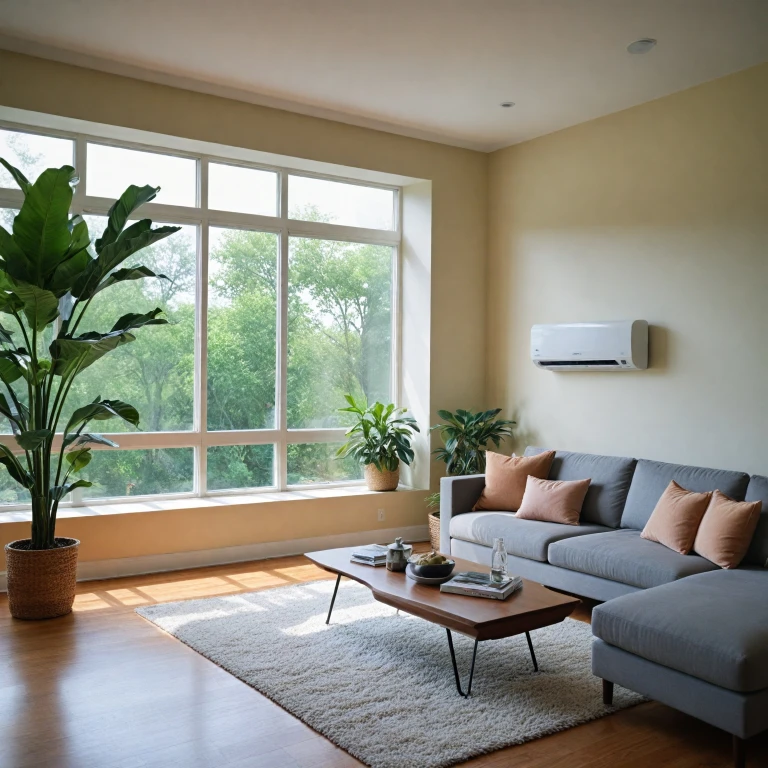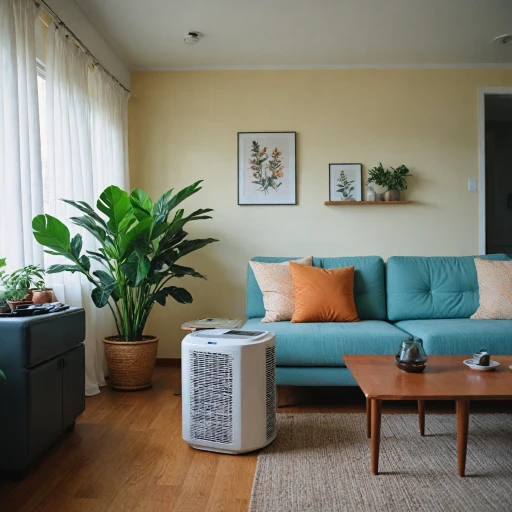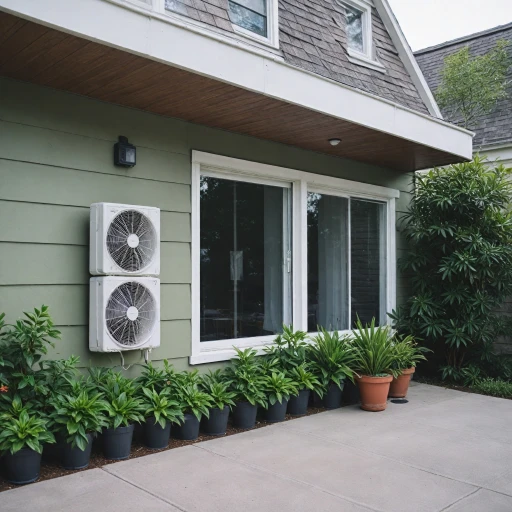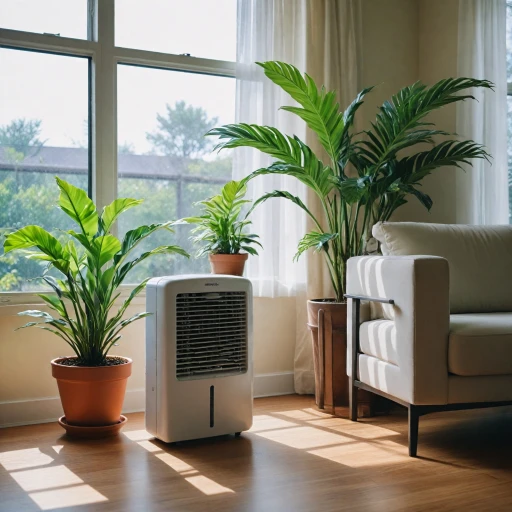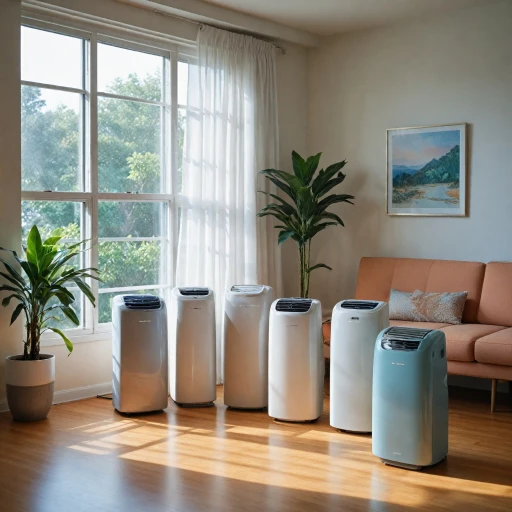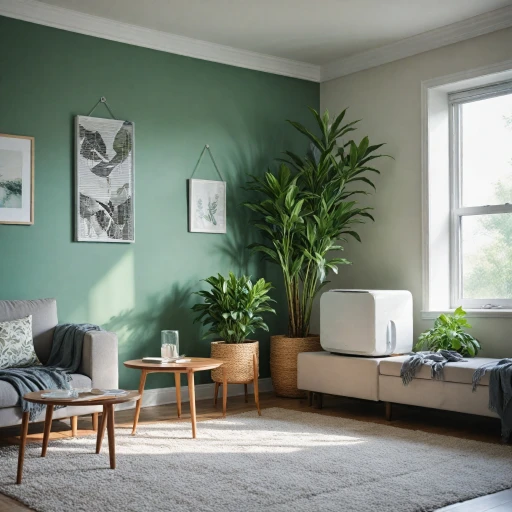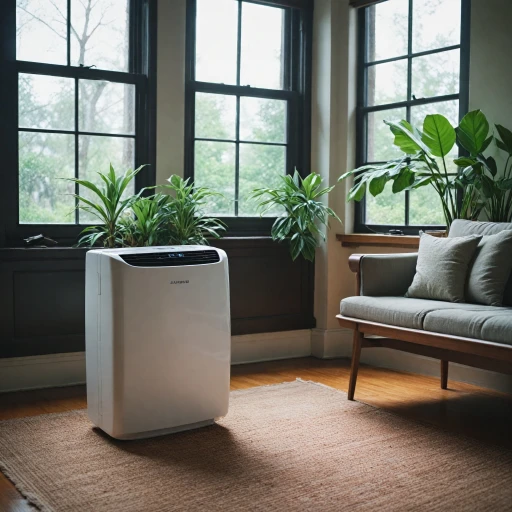
Understanding Ductless Air Conditioners
Ductless Air Conditioning Systems: A Modern Solution
Ductless air conditioning systems, often referred to as mini splits, have emerged as a versatile option for those seeking a flexible, energy-efficient cooling solution. Unlike traditional systems, ductless air systems do not require extensive ductwork. Instead, they rely on indoor units that can be placed strategically throughout different rooms.
The concept of ductless systems involves two main components: an outdoor inverter compressor unit and one or more indoor air handlers. These mini split systems deliver conditioned air directly into specific zones, offering a more customized air conditioning experience.
While considering a ductless mini split, it's important to understand the system’s SEER (Seasonal Energy Efficiency Ratio) rating. A higher SEER ductless air system typically means better energy efficiency, which can result in lower energy bills over time. Many energy star-rated ductless systems excel in this respect, providing both environmental and cost benefits.
Manufacturers such as Pioneer are known for producing reliable mini splits that offer both cooling and heating capabilities through their heat pump technology. This dual functionality makes them ideal for varying climate conditions.
In comparison to traditional air conditioners, ductless systems offer a range of advantages, such as customizable comfort settings, quieter operation, and simple installation. Instead of extensive ductwork, these systems only require a small hole for the connection between the indoor and outdoor units, reducing installation time and preserving your home's structure.
When considering installing a ductless mini split, it's crucial to evaluate your specific home needs. Factors such as room size, local climate conditions, and energy efficiency goals should guide the selection of an appropriate system with the right BTU rating for effective temperature control.
If you're interested in exploring more about how these systems stack up against other air conditioners, or understanding their installation and maintenance nuances, you'll find a wealth of information through expert reviews and detailed comparative analyses.
For a deeper dive into the unique features of ductless solutions and their benefits, you might want to explore this understanding the ductless air conditioning systems.
Advantages of Going Ductless
Showing the Edge: Advantages of Ductless Systems
When it comes to modern air conditioning solutions, ductless systems, commonly known as split air systems, lead the charge with efficiency and versatility.
- Energy Efficiency: Perhaps the most appealing advantage is their energy-saving potential. Ductless mini splits typically have higher SEER ratings, meaning they're designed to provide more cooling or heating output per unit of energy consumed. Models like the inverter air systems further enhance efficiency by adjusting the power used to match the required load, saving energy during less intense use.
- Flexible Installation: Ductless air conditioners are not just mini by existence but offer a full range of installation possibilities. They fit snugly in spaces without the need for extensive ductwork, making them perfect for retrofitting older buildings or cooling specific rooms. The indoor units of these systems aren't bulky, blending seamlessly into interiors.
- Cost-Effectiveness: Initially, the price of a ductless system might seem high, but you can save on energy costs in the long run. Their efficient performance, combined with the targeted heating cooling mechanism, ensures that you're not paying for unused areas, effectively bringing down the overall expense.
- Quiet Operation: With less noise emission compared to traditional and portable systems, ductless mini split air conditioners provide a peaceful environment. This low noise level is due to the outdoor unit handling the compressor's noisier operation.
- Versatile Applications: Whether for a single room or multiple zones, ductless splits are scalable, making them an ideal solution for complex heating and cooling needs. From small office spaces to large residential homes, these systems reliably deliver comfort.
Emphasizing these benefits reveals why many people are shifting from traditional to ductless options. Understanding the benefits of portable options can further illuminate the reasons behind such a move, especially when it comes to matching specific cooling needs.
Comparing Ductless and Portable Air Conditioners
Assessing the Versatility and Efficiency
When it comes to efficient cooling solutions, choosing between ductless mini splits and portable air conditioners can lead to a thoughtful consideration of both versatility and energy savings. Ductless systems, also known as split air conditioners, often provide a more permanent solution with indoor units that seamlessly integrate into your space. But what about those who value flexibility and perhaps are on a tighter budget? Here, portable air conditions shine. Portable air conditioners offer unparalleled convenience. They can be moved from room to room, allowing you to cool exactly where you need it most. However, when comparing it to ductless air systems, one must weigh the aspect of energy efficiency. While many portable units are labeled as Energy Star, ductless systems are generally more efficient, featuring advanced technology like inverter air compressors and substantial SEER ratings. These ratings reflect how ductless split systems use energy over a season, providing insight on potential savings in electricity bills. In terms of installation, mini split systems require professional setup as they involve both indoor and outdoor units. Portable air conditioners, on the other hand, come with straightforward setup, typically needing only a window for the exhaust hose. This ease of use and setup can be appealing, particularly for renters or individuals not wishing to invest in a more permanent installation. Don't overlook the capacity needs as well. Ductless air systems often have higher BTU ratings tailored for whole-house solutions, whereas portable units scale well in smaller, cozy spaces. It's crucial to evaluate your environment and how each option could complement your existing heat and cooling system. For further clarity, our comprehensive guide on choosing the right portable AC unit will walk you through the essentials of making an informed decision. Ultimately, if the focus is on energy conservation and long-term operation, ductless minisplit systems edge out as the preferable choice. Nonetheless, for short-term relief and transportable benefits, a regular portable system cannot be discounted.Installation Considerations
Key Considerations for Seamless Installation
Choosing a ductless air conditioning system requires some thought regarding installation to ensure optimal functionality and efficiency. Unlike regular air conditioning units, ductless systems demand distinctive considerations due to their unique setup and design, particularly in the context of mini split systems. Firstly, assess the capacity of the unit, commonly measured in BTUs (British Thermal Units). It's essential to calculate the right BTU to match the room size to prevent energy waste and guarantee comfort. For those opting to install a ductless mini split system, keep in mind:- Site Selection: Choosing the right location for indoor and outdoor units is crucial. Ensure the indoor units are placed in areas with good air circulation and direct access to the room they are meant to serve. Meanwhile, outdoor units must be in an area free from obstructions like debris or plants.
- Inverter Technology: Many modern ductless systems incorporate inverter technology enhancing energy efficiency by adjusting the compressor speeds according to the cooling demand, as opposed to conventional systems that start and stop repeatedly.
- Energy Efficiency: Ductless systems often boast higher SEER ratings, indicating better energy efficiency. Be sure to verify the system's Energy Star rating as well to ensure it meets the desired energy conservation measures.
- Professional Installation: While mini split systems are designed to be easier to install than full or regular split systems, professional installation is highly recommended. Incorrect installation can lead to operational issues and reduced lifespan of both the indoor and outdoor units.
- Additional Functionalities: Explore options like heat pumps if you want dynamic use out of your conditioning system, capable of providing both heating and cooling.
Maintenance and Longevity
Ensuring Optimal Performance Through Regular Maintenance
Proper maintenance is key to ensuring the longevity and efficiency of your ductless air conditioners. Regular upkeep not only prolongs the lifespan of your system but also enhances its energy-saving capabilities. Here's what you need to keep an eye on:- Filter Maintenance: Frequently cleaning or replacing the filters in your ductless mini split systems is crucial. A clogged filter restricts air flow, reducing efficiency, and putting strain on the air conditioner. This can ultimately increase energy consumption and reduce SEER ratings.
- Inspecting Indoor Units: Ensure that the indoor units are functioning effectively by checking for any unusual noises or leaks. Cleaning the coils can prevent issues with air circulation and heat absorption.
- Outdoor Unit Clearance: The outdoor unit, a vital part of the system, needs to be clear of debris and obstructions. Regular checks prevent airflow restriction, which could impact cooling and heating efficiency.
- Checking Refrigerant Levels: Low refrigerant levels can compromise performance, so it is essential to monitor and adjust them if necessary. This ensures the conditioner maintains its efficiency and heating capability, akin to a heat pump system.
- Professional Servicing: Even with regular personal maintenance, scheduling professional servicing for your split air conditioners once a year can help identify potential issues early. This includes ensuring the variable speed inverter operates as intended, offering consistent heating and cooling.
